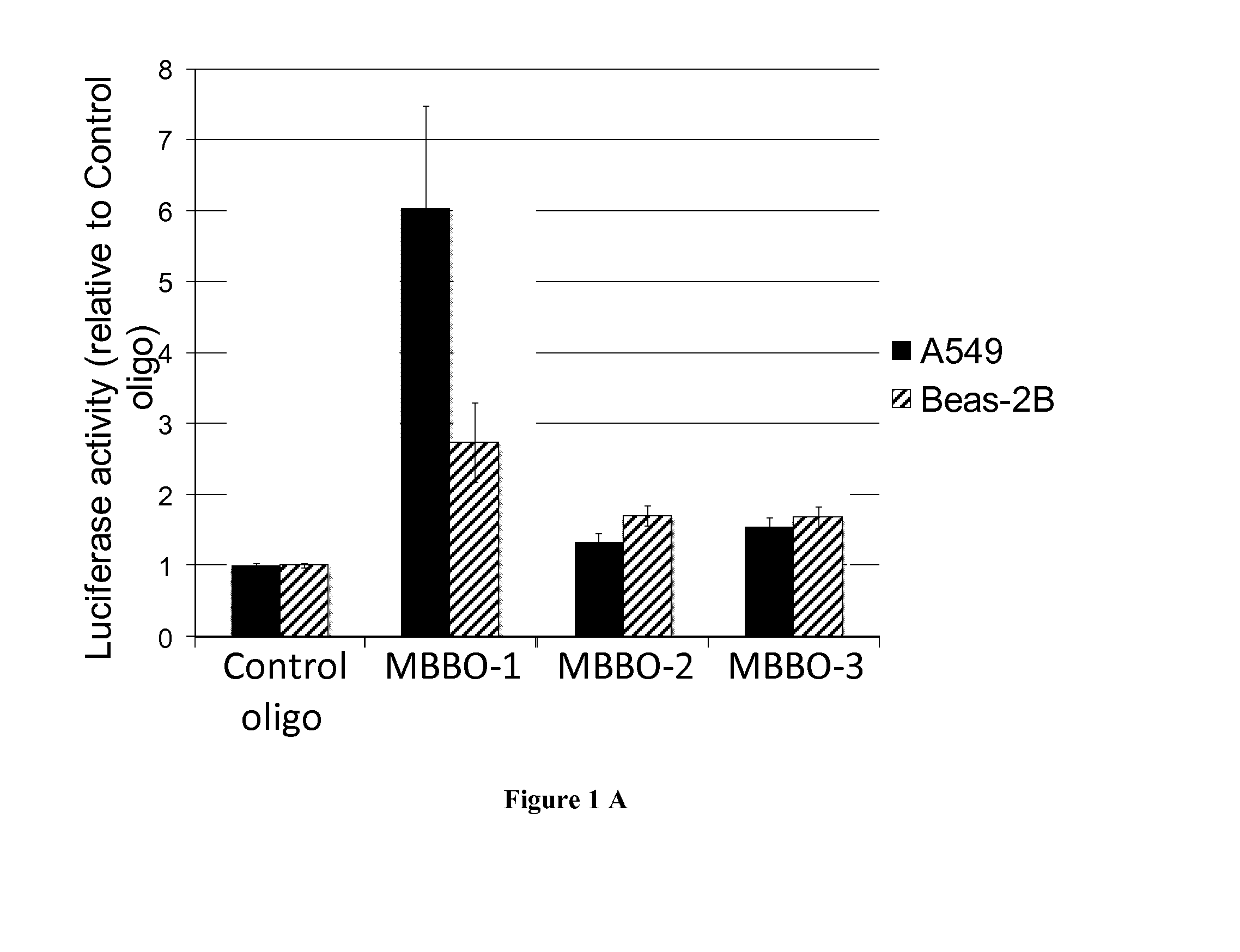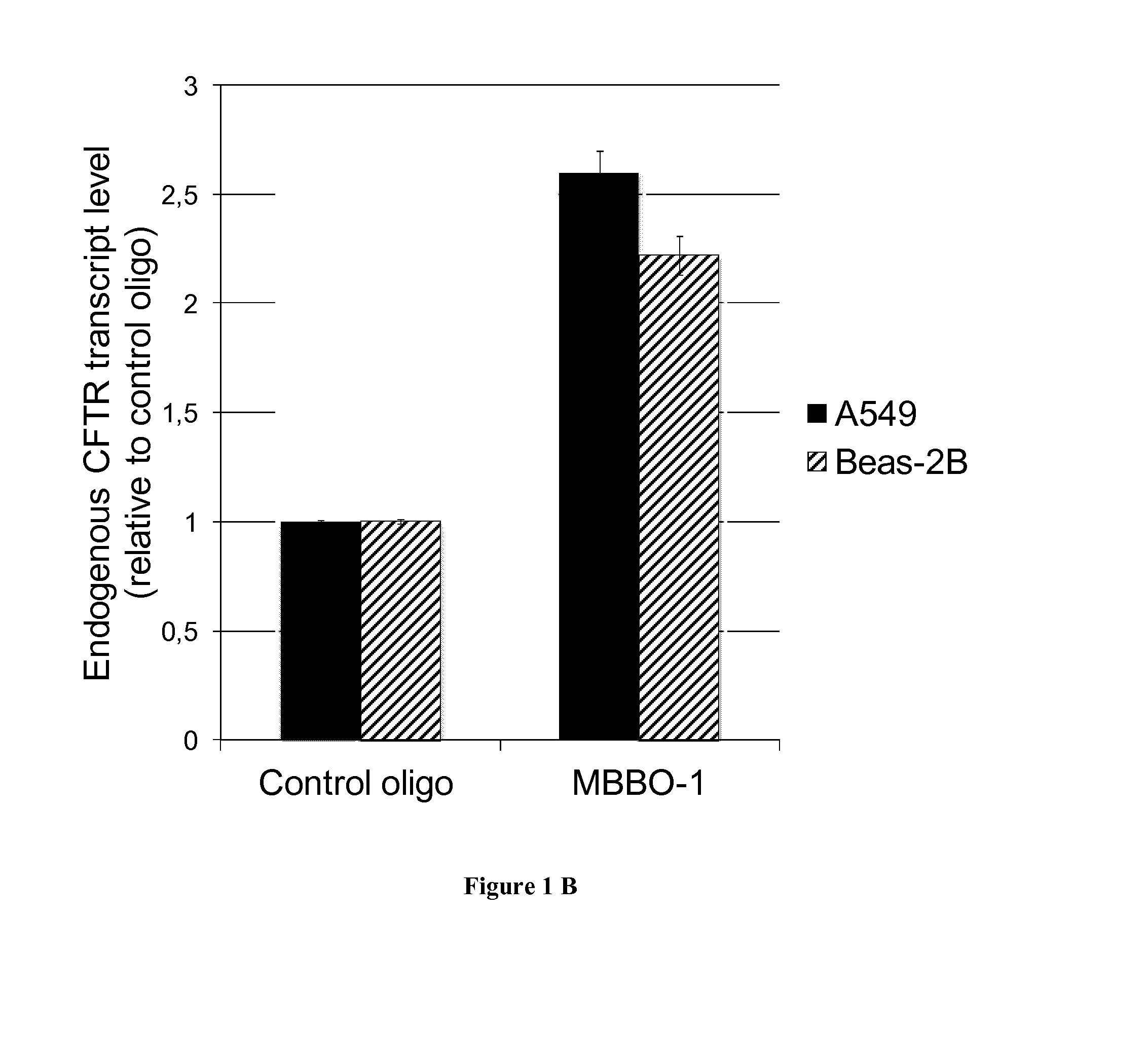Methods and pharmaceutical compositions for treatment of cystic fibrosis
- Summary
- Abstract
- Description
- Claims
- Application Information
AI Technical Summary
Benefits of technology
Problems solved by technology
Method used
Image
Examples
example 1
[0065]Material & Methods
[0066]Gene Reporter Vectors and Directed Mutagenesis
[0067]The 3′UTR of the CFTR gene (1.7 kb from the termination codon to the poly-adenylation signal) was subcloned into the pGL3-Control vector (Promega) downstream of the Luciferase gene (pGL3C-CFTR-3UTR). Degeneration of cis-motifs was realized by direct mutagenesis using the QuickChange®II site-directed mutagenesis kit (Stratagene). All constructs were verified using direct sequencing.
[0068]microRNA Precursors and Target Site Blocker Oligonucleotides (TSB)
[0069]Pre-miR™ miRNA precursors and pre-miR™ miRNA precursor negative control were purchased from Ambion (Life Technologies). LNA™-enhanced oligonucleotides used as miRNA binding-blockers (MBBO) are named TSB, recognizing the CFTR 3′UTR overlapping the miR-101 (MBBO-1), miR-145 (MBBO-2) and miR-384 (MBBO-3) target sites were designed (EXIQON). As a control, miRCURY LNA™ microRNA inhibitor negative control A was used (EXIQON).
[0070]Cell Culture
[0071]Human ...
example 2
[0101]Material & Methods
TSB Oligonucleotides sequencesTSB1:GTT GGT ACT TCT GTA ATATSB2:ACC TTA CTT ATA TCT CAA
[0102]In Silico Analysis
[0103]First, the CFTR variants was analysed using Human Splicing Finder 2.4.1 (http: / / www.umd.be / HSF / HSF.html), including two different calculation algorithms (HSF and MaxEnt) and NNSplice (http: / / www.fruitfly.org / seq_tools / splice.html; Splice Site Prediction by Neural Network or SSPNN). We assumed that aberrant splicing could occur when a de novo splice site (ss) was predicted or when the score of a sub-optimal pre-existing ss was dramatically increased in the mutated sequence. We also evaluated wild type (wt) and mutated sequences using the SpliceAid 2 database (http: / / 193.206.120.249 / splicing_tissue.html).
[0104]Second, we evaluated the conservation of the nucleotide position affected by a substitution in a set of selected mammalian orthologues. We first aligned the human genomic sequence of CFTR (NC_000007.13) with nine vertebrate orthologues from ...
PUM
 Login to View More
Login to View More Abstract
Description
Claims
Application Information
 Login to View More
Login to View More - R&D Engineer
- R&D Manager
- IP Professional
- Industry Leading Data Capabilities
- Powerful AI technology
- Patent DNA Extraction
Browse by: Latest US Patents, China's latest patents, Technical Efficacy Thesaurus, Application Domain, Technology Topic, Popular Technical Reports.
© 2024 PatSnap. All rights reserved.Legal|Privacy policy|Modern Slavery Act Transparency Statement|Sitemap|About US| Contact US: help@patsnap.com










